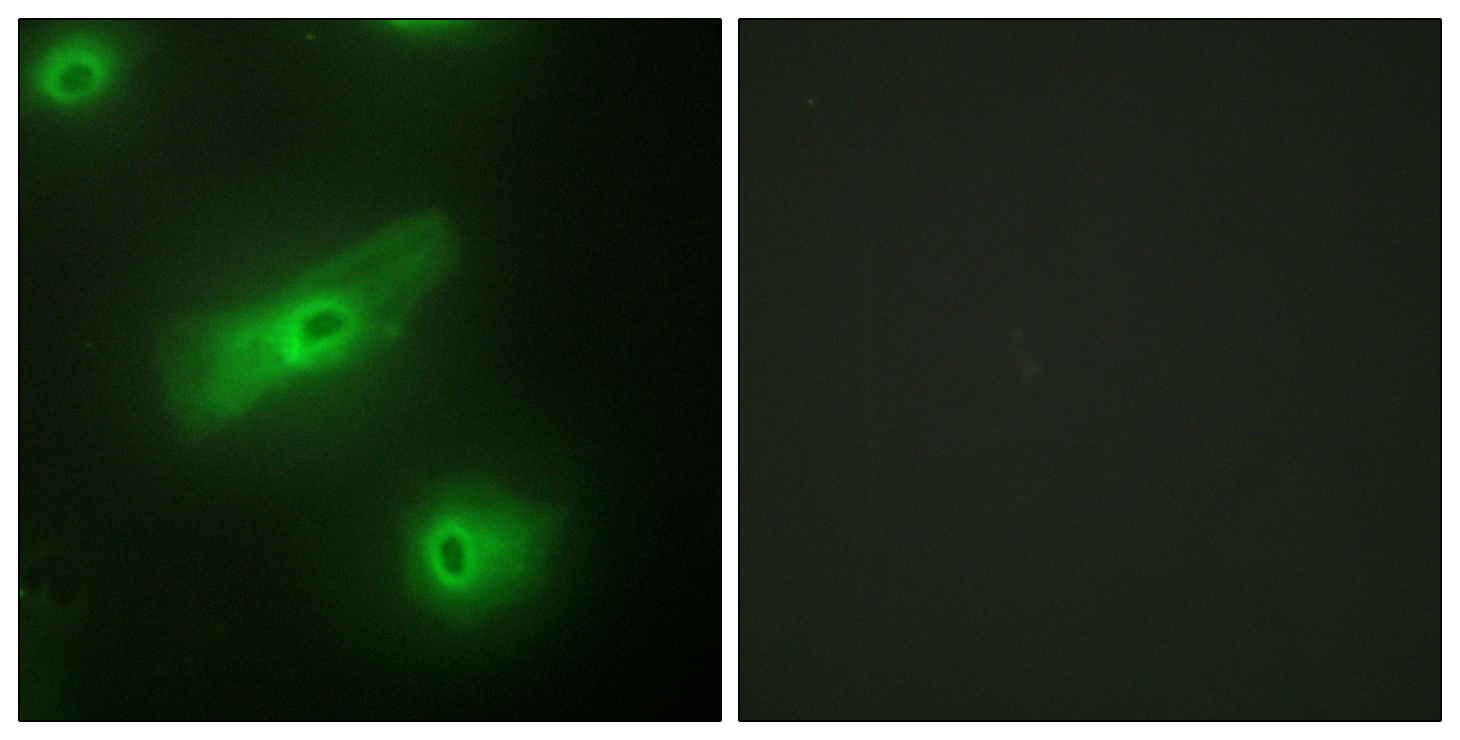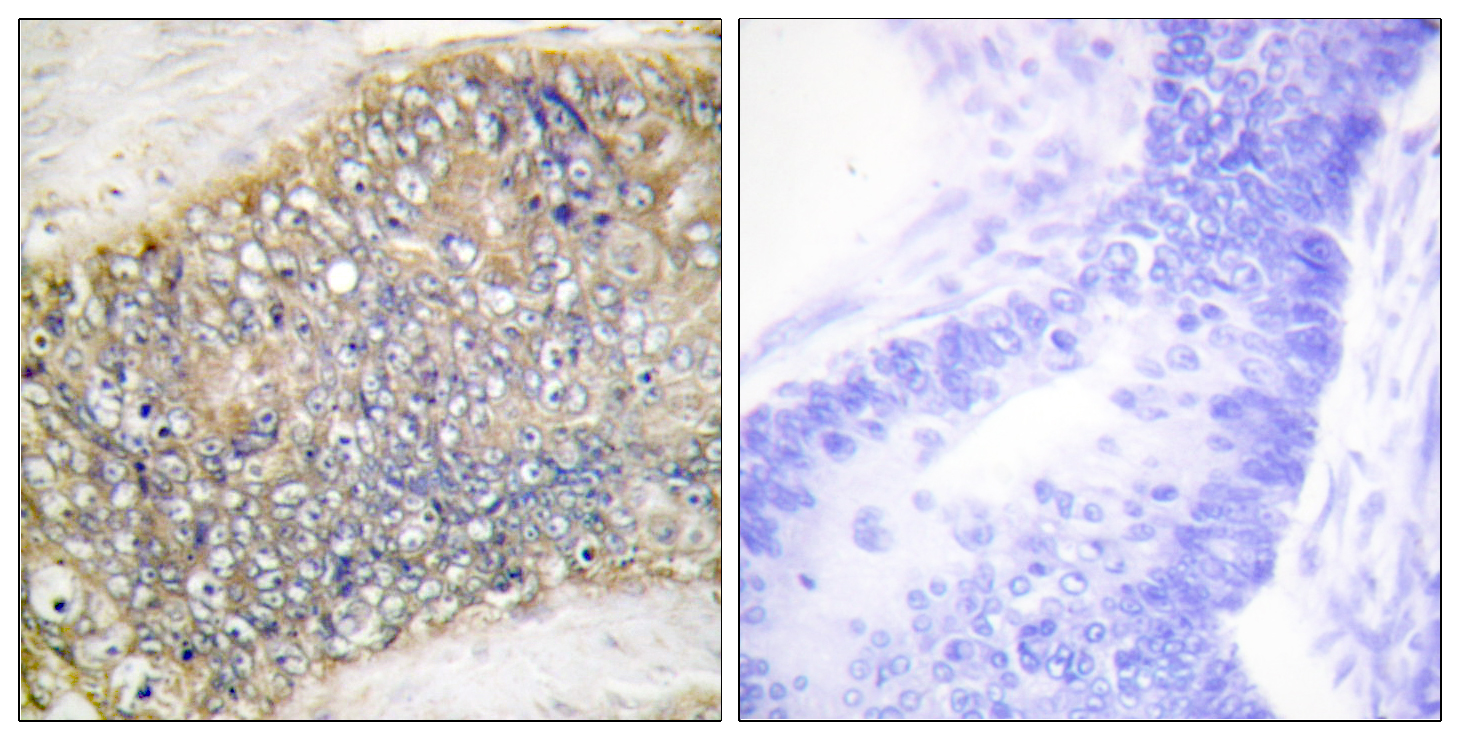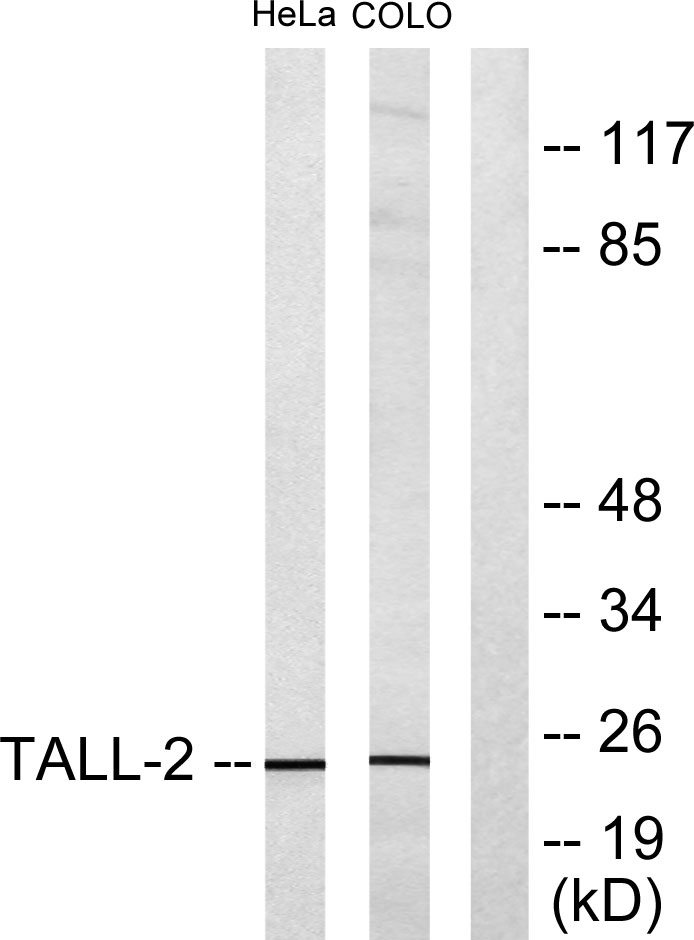APRIL Polyclonal Antibody
- Catalog No.:YT0284
- Applications:WB;IHC;IF;ELISA
- Reactivity:Human;Mouse;Rat
- Target:
- APRIL
- Fields:
- >>Cytokine-cytokine receptor interaction;>>Intestinal immune network for IgA production;>>Rheumatoid arthritis
- Gene Name:
- TNFSF13
- Protein Name:
- Tumor necrosis factor ligand superfamily member 13
- Human Gene Id:
- 8741
- Human Swiss Prot No:
- O75888
- Mouse Gene Id:
- 69583
- Mouse Swiss Prot No:
- Q9D777
- Immunogen:
- The antiserum was produced against synthesized peptide derived from human TALL-2. AA range:151-200
- Specificity:
- APRIL Polyclonal Antibody detects endogenous levels of APRIL protein.
- Formulation:
- Liquid in PBS containing 50% glycerol, 0.5% BSA and 0.02% sodium azide.
- Source:
- Polyclonal, Rabbit,IgG
- Dilution:
- WB 1:500 - 1:2000. IHC 1:100 - 1:300. IF 1:200 - 1:1000. ELISA: 1:10000. Not yet tested in other applications.
- Purification:
- The antibody was affinity-purified from rabbit antiserum by affinity-chromatography using epitope-specific immunogen.
- Concentration:
- 1 mg/ml
- Storage Stability:
- -15°C to -25°C/1 year(Do not lower than -25°C)
- Other Name:
- TNFSF13;APRIL;TALL2;ZTNF2;Tumor necrosis factor ligand superfamily member 13;A proliferation-inducing ligand;APRIL;TNF- and APOL-related leukocyte expressed ligand 2;TALL-2;TNF-related death ligand 1;TRDL-1;CD antigen CD256
- Observed Band(KD):
- 23kD
- Background:
- The protein encoded by this gene is a member of the tumor necrosis factor (TNF) ligand family. This protein is a ligand for TNFRSF17/BCMA, a member of the TNF receptor family. This protein and its receptor are both found to be important for B cell development. In vitro experiments suggested that this protein may be able to induce apoptosis through its interaction with other TNF receptor family proteins such as TNFRSF6/FAS and TNFRSF14/HVEM. Alternative splicing results in multiple transcript variants. Some transcripts that skip the last exon of the upstream gene (TNFSF12) and continue into the second exon of this gene have been identified; such read-through transcripts are contained in GeneID 407977, TNFSF12-TNFSF13. [provided by RefSeq, Oct 2010],
- Function:
- function:Binds to FN14 and possibly also to TNRFSF12/APO3. Weak inducer of apoptosis in some cell types. Mediates NF-kappa-B activation. Promotes angiogenesis and the proliferation of endothelial cells. Also involved in induction of inflammatory cytokines.,function:Cytokine that binds to TNFRSF13B/TACI and to TNFRSF17/BCMA. May be implicated in the regulation of tumor cell growth. May be involved in monocyte/macrophage-mediated immunological processes.,induction:Down-regulated by phorbol myristate acetate/ionomycin treatment.,PTM:The precursor is cleaved by furin.,PTM:The soluble form derives from the membrane form by proteolytic processing.,similarity:Belongs to the tumor necrosis factor family.,subunit:Homotrimer (Potential). Interacts with the angiogenic factor AGGF1/VG5Q.,subunit:Homotrimer .,tissue specificity:Expressed at high levels in transformed cell lines, cancers of colon, thy
- Subcellular Location:
- Secreted .
- Expression:
- Expressed at high levels in transformed cell lines, cancers of colon, thyroid, lymphoid tissues and specifically expressed in monocytes and macrophages.
- June 19-2018
- WESTERN IMMUNOBLOTTING PROTOCOL
- June 19-2018
- IMMUNOHISTOCHEMISTRY-PARAFFIN PROTOCOL
- June 19-2018
- IMMUNOFLUORESCENCE PROTOCOL
- September 08-2020
- FLOW-CYTOMEYRT-PROTOCOL
- May 20-2022
- Cell-Based ELISA│解您多样本WB检测之困扰
- July 13-2018
- CELL-BASED-ELISA-PROTOCOL-FOR-ACETYL-PROTEIN
- July 13-2018
- CELL-BASED-ELISA-PROTOCOL-FOR-PHOSPHO-PROTEIN
- July 13-2018
- Antibody-FAQs
- Products Images

- Western Blot analysis of various cells using APRIL Polyclonal Antibody diluted at 1:2000
.jpg)
- Western Blot analysis of COLO205 cells using APRIL Polyclonal Antibody diluted at 1:2000

- Immunofluorescence analysis of HeLa cells, using TALL-2 Antibody. The picture on the right is blocked with the synthesized peptide.

- Immunohistochemistry analysis of paraffin-embedded human colon carcinoma tissue, using TALL-2 Antibody. The picture on the right is blocked with the synthesized peptide.

- Western blot analysis of lysates from HeLa and COLO205 cells, using TALL-2 Antibody. The lane on the right is blocked with the synthesized peptide.



